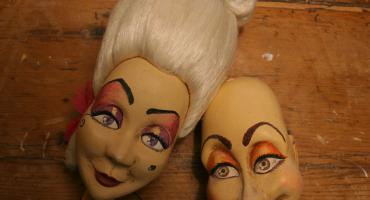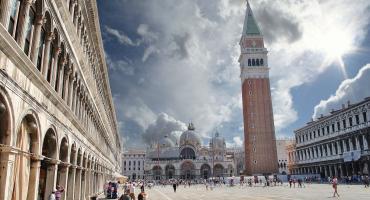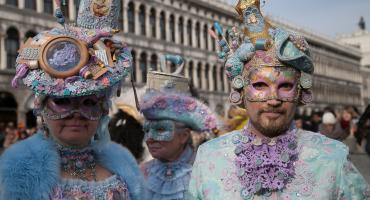It seems that Carnival was already celebrated in the tenth century in Venice, when the Duke Vitale Faliero mentioned it for the first time in some official documents.
In fact, the earliest information regarding the Venice Carnival is to be found in private papers referring to a Christian interpretation of the Latin “carrus navalis”, a purification and exorcism rite, celebrated in February, the last month of the Roman calendar.
But Carnival has its roots in many traditions, from the Latin feast of Saturnalia to the Greek feast of Dionysian cults celebrated by the beginning of spring, when masks were used as symbolic representations.
In 1296 Shrove Tuesday, Mardi Gras, were declared holidays by Venice Senate.
During the Serenissima Republic the celebrations lasted for six weeks, from December 26th to Shrove Tuesday, when the end of Carnival announced the beginning of Lent.
The celebrations reached their highest levels on Carnival Thursday and ended the day before Ash Wednesday, although permission of wearing masks and disguises was often given from October 1st and it wasn't unusual to attend parties and banquets during Lent.
 During Carnival everything was permitted and everyone used to wear a mask so any social difference was temporarily abolished. Saint Mark's Square and all the other squares of the town became vast stages where people used to dance and play, organizing every sort of entertainment!
During Carnival everything was permitted and everyone used to wear a mask so any social difference was temporarily abolished. Saint Mark's Square and all the other squares of the town became vast stages where people used to dance and play, organizing every sort of entertainment!
Carnival parties involved the whole city breaking all the rules of society.
But Carnival was also a mean of rigid control over human pulsions to water down social tensions and maintain consensus. In fact, in the strictly hierarchical Venetian society, it was helpful to give the most humble classes the illusion of becoming similar to the more powerful ones, even if it was only a gracious concession for a prescribed period of time.
During the XVIII century Carnival parties, entertainments, masks, theatres and the public gambling house, the Ridotto at S. Moisé, became touristic attractions for the whole Europe, and Venice began to welcome thousands of visitors eager to experience its extremely unusual and effervescent atmosphere!
 During this period Carnival lasted several months and this has certainly contributed to the creation of the myth of Venice as a city of pleasure and enjoyment.
During this period Carnival lasted several months and this has certainly contributed to the creation of the myth of Venice as a city of pleasure and enjoyment.
The Serenissima Republic fell to the French in 1797, then Carnival was abolished by Napoleon.
Carnival celebrations were re-established only when the city was under the Austrians.
Nowadays masks coming from all over the world use to crowd Venetian squares, Saint Mark square and its cafés. Besides the traditional masks you can see all type of costumes and are organized many dances, parties, concerts and performances in theatres.



